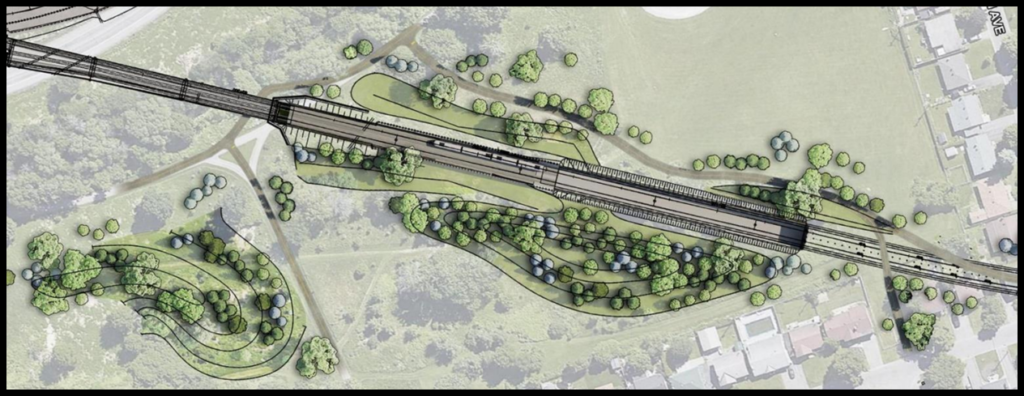A noise study for LRT Phase II confirmed the need for noise mitigation through Connaught Park. It also found that the proposed berms would not be effective. It proposes a combination of three measures for the portion of the track from the fly-over to the tunnel: absorptive wall panels, a noise barrier wall, and rail dampers.
QTN members of the Public Advisory Panel continue to raise concerns about the adequacy of the noise study, particularly the lack of attention to the curve that goes to Baseline and the fly-over. We also continue to advocate for more sight mitigation in the landscape plan and increased attention to make it an attractive green space for the future.
If you want more information, copies of the noise study and related documents have been posted in the LRT section of QTNca’s Planning page.
In the meantime, choices are being made about the design of the noise wall and the plan for vines and tree-planting to make the wall more compatible with a park setting. The choice of materials for the noise wall will make a difference in how that space feels in the future. Quick-growing vines on the wall and planting trees for the longer term can help to maintain a park context. The landscape plan includes the use of small berms and a mix of types of trees to recreate a green space that is attractive and sustainable. Some residents want to have fruit trees included in the mix of trees planted, along with evergreens and deciduous trees. You can make your views known by completing a short survey (now closed) or send your views to the PAC group and OC Transpo via an e-mail to qtncommunity@gmail.com.


